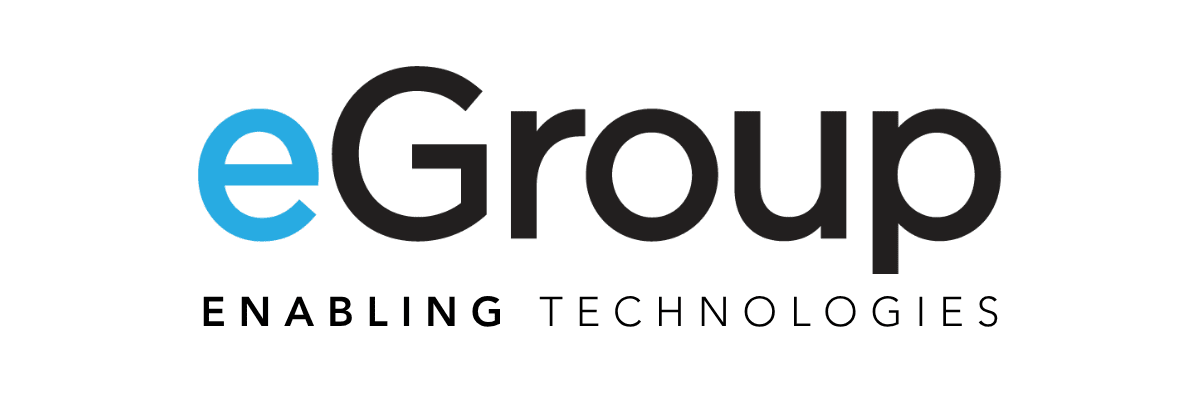A Perspective from the CEO’s Desk
The big gain in adopting cloud-based services is certainly financial, but not always “directly” –
I have a suspicion that as soon as I publish this, someone is going to say “Hey Mike, come on, you sell what you’re writing about, so how can we <insert skepticism here>?”
While this may be true to some degree, it would completely miss the point that this post is really about a perspective based on my own experience in occupying the corner office at eGroup. True, I do get to share it frequently, and true, I have seen it adopted with great effect for the clients I serve, but this is my own story, and comes from eating my own dog food.
What Cloud Really Means
With many of the “dog foods” I have access to in the technology space, the upfront prosecution of value realization has to be undertaken, and then consequently achieved. Fancy talk for ensuring “the ends must justify the means”. I say this to point out that not all cloud services are the right choices, just the same way I’d point out that not all on-premise solutions are the right choice. As a good friend used to tell me, “Mike, there are a lot of right answers out there, but are they right for you?”
I should back up just a bit here and say for the reader that my definition of “cloud” is essentially any “consumable” that can be consumed or delivered “as a service” – this could be platform, infrastructure, security, applications, functionality, the list goes on. This is not a new concept or offering, but an evolutionary story where we’ve seen different consumables shift over time towards cloud services and cloud delivery, as iterative advancements in technology allow for the “cloud” to be a faster, better, less expensive mechanism to securely deliver value.

The Cloud Tipping Point: From Slow to Fast
As Paul Maritz famously said at VMware Partner Exchange 2011:
“It’s going to be a long journey …slow..slow.. slow. Then suddenly Fast! Fast! Fast! The key is to prepare for it and be ready for the tipping point”
We’ve crossed over the tipping point.
Just a few short years ago, my company, eGroup, was on the forefront of the wave to deliver “complex but capable” technical infrastructure to all kinds of clients who needed servers/storage/security/network platforms to run mission critical on-premise applications – and one of the big on-prem applications was Microsoft Exchange. It always occupied the “ivory tower” of the on-premise data center architecture stack, because, quite naturally, organizations could not be without email. It’s a tier-1 application!
I clearly remember one organization who brought us in at the 11th hour, investing several million dollars in their data center architecture (virtualization, unified computing platforms, storage, data center switching, etc.) simply because they needed to get on the latest version of Exchange to support their president’s new iPhone ActiveSync needs. True story! A much-needed refresh for a legacy platform system that was unable to meet the simple request of “the boss” – and in the process, through thoughtful planning and good stewardship, consolidated numerous other silos for efficiencies (the follow on Cost-Benefit Analysis that justified the bosses initial request) – however, the impact of that simple “need of the boss as the catalyst” hasn’t left me as an example of the oft-talked about “agility” organizational leadership is trying to achieve with IT.
Although it would be tough to quantify the “it’s not what it cost, it’s what it saved” factor from just the bosses perspective alone, what that platform refresh ultimately allowed was much greater, in that it re-enabled the entire organization for productivity that was theretofore unknown.
The True Cost of On-Prem Infrastructure
So, a couple of forks here, neither of which I’ll take – but, think about it briefly. The first fork is that the organization (until the boss got an iPhone for Christmas) had suffered from legacy systems that stood in the way of end-user productivity, business continuity needs, cross-platform consolidation of “like” systems, heightened security, and so on and so forth. Massive amounts of lost productivity and risk existed everywhere. The second fork is that until this point, IT platforms weren’t invested “in” for productivity gains by this organization, and in many cases by similar organizations, they were “tolerated” as an expense to be managed to the least possible cost. This insurmountably difficult task of achieving incremental success with (extracting value from) their IT systems subjected the organization to rampant productivity loss, unhappy users, and inability to meet service levels.
Furthermore, to honor the request of the boss (and also unleash the ensuing productivity and capability “avalanche” born from that request) it took 6 months of professional and technical services, significant capital expenditures in equipment, computer room buildouts for power, cooling, etc., and follow-on maintenance services to help keep it happy and healthy. No agility there.
But wait, there’s more – once deployed, the staff had to continue to maintain and patch systems, provide their own security hardening services and policies (this organization delivered products to the federal government), and address end-user issues or critical systems issues as they arose.
As dire as this sounds, the system was still hailed as a major leap forward at the time, because ultimately the productivity and capability gains vastly exceeded the care and maintenance required to keep the systems in flight (and cloud wasn’t really an option then – we weren’t at the tipping point). But even with all of this effort, keeping things “operational” was the pinnacle of success.
Cloud vs. On-Prem: The Agility Factor
As new features rolled out within product entitlements they owned, IT struggled with the implementation of those new features, and end-users often didn’t even know new capabilities were added, or how to utilize them – the ongoing value of a flexible system was unrecognized because maintenance activities to keep things operational dominated the team’s ability to focus on innovation and what we like to call the “value extraction” activities.
And here is where my experience overlaps.
I am a CEO, and I am demanding. I like new features delivered instantaneously and without added cost, BUT, like many start-up CEOs I have also worn many hats within my company. For a time, in the earlier years, I was our “de facto” Exchange Administrator at eGroup. I’ve walked a mile in IT’s shoes (and probably more miles than I’d care to mention)
And during that time, although I enjoyed, understood, and valued the product, I spent a good bit of time patching servers, applying updates, performing maintenance, ensuring security policies were appropriate, and occasionally creating and deleting mailboxes. In that era of eGroup, this seemed to be a good use of my time, and when it wasn’t, on-premise Exchange was still the best implementation method for the services we needed (Cost vs. Benefit)
The Productivity Engine of Cloud-Based Services
Fast forward a few years, skip over the tipping point, and I can say with confidence that rolling to a cloud-based productivity platform was one of the best decisions my organization has made. And not because it worked me out of my Exchange Admin job (though I admit I’m not complaining), or because it worked eGroup out of traditional professional services engagements, but because it delivers “instantaneous” value for my team. The hallowed “agility” I want as a CEO.
A new feature gets released? We have it. No lag, no professional services, no new servers, no patching, no downtime. It simply appears and is “ready to go” (reminds me of Neo in the Matrix – “I know Kung Fu!”)
Cloud productivity services like Microsoft Office 365 that have crossed the tipping point are defined less by what they cost, and perhaps not even by what they save (though this is quantifiably on the upside) – it’s defined by what they enable and how quickly they deliver it.
We get new features without lifting a finger and with a security policy that gets more attention than most nation states invest in their cybersecurity programs.
Furthermore, from a value realization perspective, my team uses the new features – daily – and more importantly, they know how to use them effectively.
For Example, Rights Management gets used daily at eGroup (RM is an unsung, rarely used feature of Exchange that was always described as clunky and hard to implement within Outlook alone) and is now extended across the wide portfolio of Office 365 applications, providing best in class information security for the sensitive information our Project Management and Delivery teams work with.
Beyond Email: A Complete Productivity Suite
Beyond email, the “dialtone of the 21st century”, the productivity gains from the Office 365 extended portfolio – a portfolio that grows every day and includes Skype, Exchange, Outlook, Teams, Yammer, Sharepoint, Delve, Planner, among many others – have become the basis for the intimate collaboration and sharing activities of various eGroup/customer virtual teams.
From my perspective, the case for cloud has been made on the usefulness of the productivity gains and has evolved into the productivity engine of my business – enabling “easy end-user usefulness without complaint or time-lag” while also fading into the background – the best kind of IT in my opinion – sufficiently invisible to the organization but enabling it nonetheless.
Cloud as the New Dialtone: The Future of IT
As a constant challenger to the status quo, eGroup believes that great ideas are always worth sharing, and this is why cloud productivity services, most notably Microsoft Office 365, is a key pillar in eGroup’s Modern Office solution.
eGroup’s Modern Office solution for Small Office or Enterprise organizations is an “as a service” offering that frees companies from all, or part, of managing the entirety of IT, using the best of the cloud “tipping point” to deliver faster, better, less expensive solutions.
In today’s world of cloud services, “cloud productivity” is as readily accessible as dialtone – we just lift the handset, and it’s there, without question, without fail.
Final Thoughts: What More Could a CEO Ask For?
Cloud services are not just about saving money. They are about what they enable.
From my perspective, cloud productivity solutions like Microsoft 365 aren’t just an IT upgrade—they are the engine of modern business agility.
And at eGroup, we are here to help companies embrace the cloud and accelerate their business.



